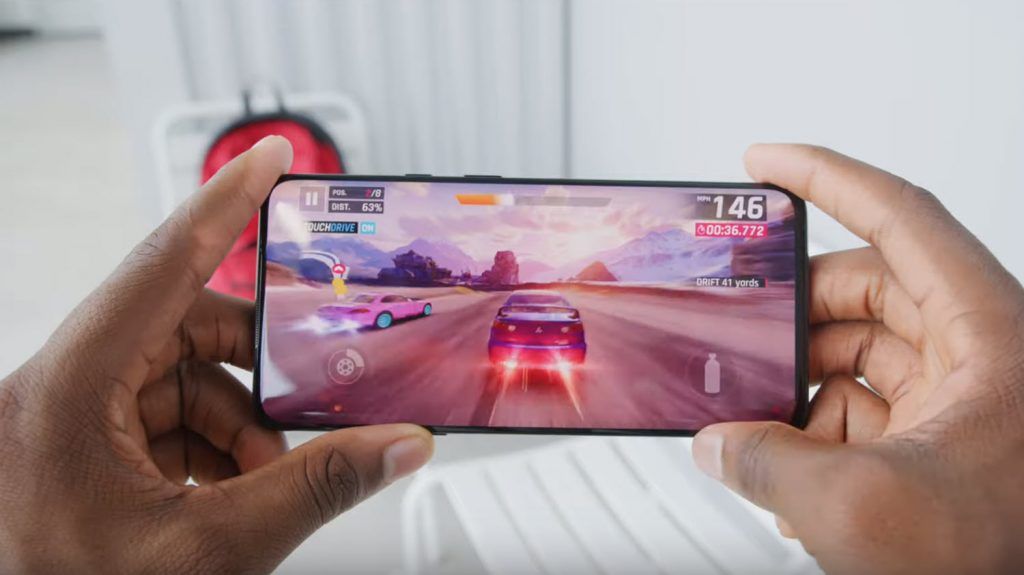Smartphone displays are advancing on a daily basis, current smartphones do less than 60Hz but a 90Hz refresh rate should ensure that any device will be able to deliver much smoother animations. It should be noted that a few people notice any discomfort between 60–72 Hz.
A higher refresh rate will also ensures much smoother scrolling through the app drawer as well as web pages. Currently, the only non-gaming flagship Android smartphone to offer a 90 Hz refresh rate display is the OnePlus 7 Pro. However, the OnePlus 7 Pro switches to 60Hz when using certain apps such as the camera. The 90Hz smoothness can only be enjoyed on games that support the 90Hz refresh rate.
For those unaware, most of the phones and computer monitors have a refresh rate of 60Hz, which basically means that they can switch the frame 60 times per second, commonly known as 60fps or 60 frames per second. 90Hz means 90 frames per second.
Refresh rate Vs Frames per second
In layman terms, refresh rate is the count of how many times the screen refreshes its image in one second. It is basically measured in Hertz (Hz). As I’ve said before, most smartphone displays have 60Hz refresh rate, or in other words, even if you are viewing a static image, your display is redrawing the same picture or is pushing the same frame 60 times every second.
Lets not confuse higher refresh rates and higher frame rates (Hz vs FPS). Frames per second (FPS) is the count of how many frames are being pushed to the display every second. FPS is related to the content you run on the screen, which might be a video or a game.
So, ideally, if your video has been shot and packaged at 90 frames per second and your display has 90Hz refresh rate, your phone will be able to push all frames. Similarly, you can play games or videos with 90fps on 90Hz refresh rate panel but you can’t play games at 90fps on a display with a lower, say, 60Hz refresh rate.
If you feed 60fps content to a 90Hz screen, the display will either switch to 60Hz or duplicate some frames.
What does a higher refresh rate screen feel like in person? The impact is subtle yet noticeable with motion. If you are scrolling in App drawer, in your browser or your social media feed, your content will seem to flow up and down with less friction. Kind of like the difference you’d feel between pushing an ice slab and a wooden slab on a marble floor. Similarly, animations are smoother too.
A Gamer’s glory
The 90Hz refresh rate will make supported games run much smoother; yes, the 90Hz smoothness can only be enjoyed on games that support the 90Hz refresh rate. The good thing is that it sets a benchmark for the upcoming new devices which gives the game developers freedom of bringing the 90Hz support. Not only limited to gaming but the 90Hz display brings a fluidity overall in the interface and usage of the smartphone.

Mobile devices that Support over 90Hz refresh rate
The OnePlus 7 Pro: This has made the display refresh rate mainstream. By offering a 90Hz display on the OnePlus 7 Pro the company has leaped ahead of giants like Samsung, Huawei, LG and Google who are yet to offer an AMOLED screen with similar capabilities.
Asus’s first ever Republic of Gamers (ROG) branded phone was also the first phone with a 90Hz display. The phone came with a 6-inch AMOLED screen with 90Hz refresh rate and full HD+ resolution.
Razer Phone 2 also comes with a 5.7-Inch 2K LCD screen with 16:9 aspect ratio and 120Hz refresh rate. What it means is that, theoretically, it is more fluid and smoother than the current 90 Hz devices.
Red Magic 3 which also bolsters a 90Hz AMOLED screen. This aggressively speced phone comes with a copper cooling tube to keep the temperature under check even after prolong intense gaming sessions. Nubia has powered its gaming phone with Snapdragon 855 chipset, coupled with up to 12GB of RAM.
Sharp Aquos 3 has a 120Hz display that stretches to 6.2-inch Pro IGZO panel with 3120 x 1440-pixel resolution. This display is also HDR10 compatible.
iPad Pro 2018 has a 120Hz refresh rate system-wide. Of course, it’s not a phone.


